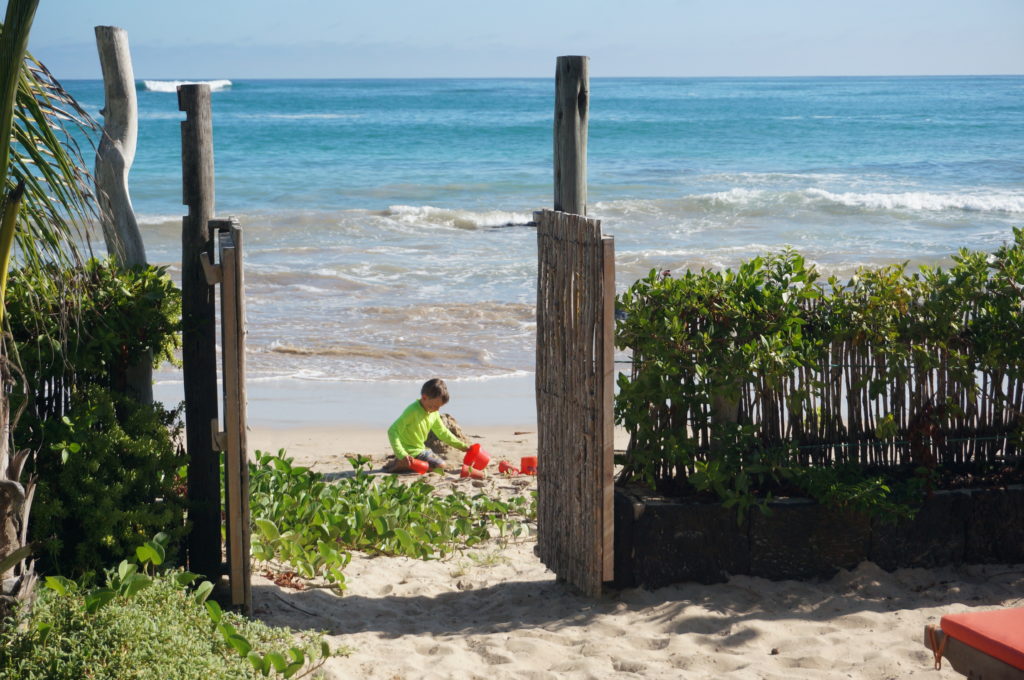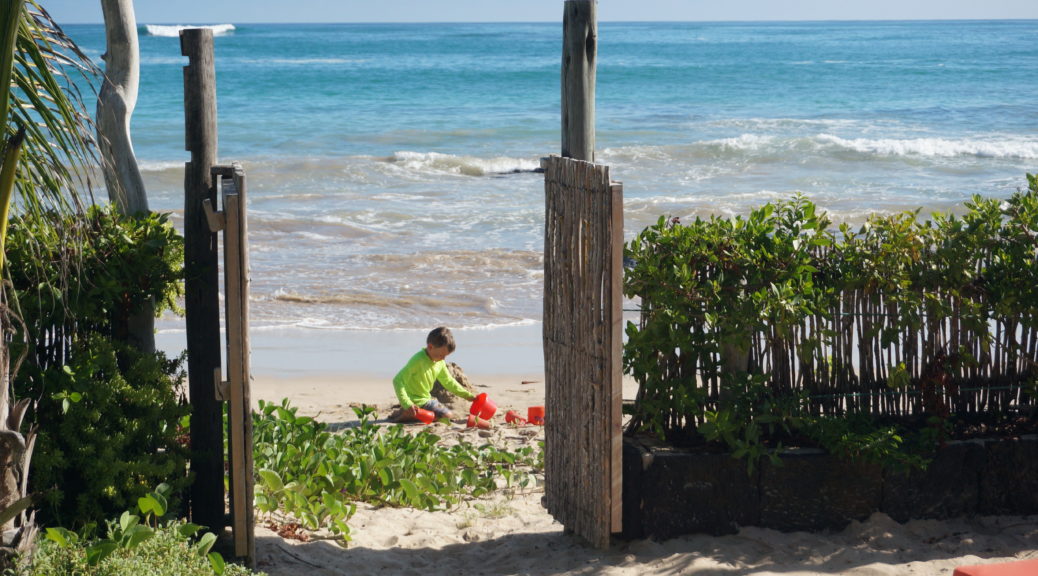Two weeks in Ecuador and the Galapagos sounds like just the right amount of adventure, they agreed. In the end, they got all the adventure they bargained for and just a little bit more. That’s how epic “we’ll be laughing at this a year from now” stories are created.
Our plan was to meet in Guayaquil, fly to the Galapagos, and spend a few days on the island of Santa Cruz. We would use the latter as a base to tour some of the other islands, then travel to Isabela for a few days. Finally, we would fly back to mainland Ecuador and relax on the beach for a week or so before the Swansons had to return home.
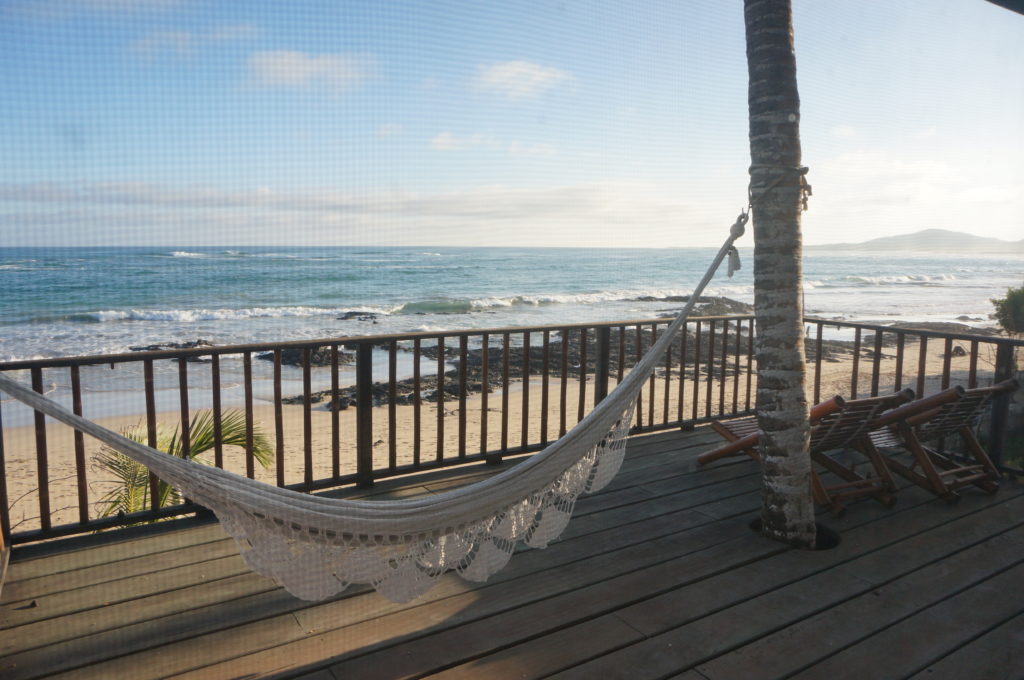
The few days we had spent in Santa Cruz had already provided us with a lifetime’s worth of memories, and we were excited to move on to Isabela where we could slow down a bit and explore what we had heard was a beautiful, tranquil island.
Isabela is the largest island in the Galapagos archipelago, and one of only four that are inhabited – five if you count Baltra, the tiny speck that houses Baltra Airport. Isabela lies 20 miles due west of Santa Cruz, and while there are occasional island-hopper flights between the two, it turned out that a ferry was the more convenient option for us.
Check Out – Arenal and the Central Highlands of Costa Rica
Our host Furio helped us load our bags into a water taxi and hugged us goodbye. We had purchased tickets for the morning ferry a few days earlier for $30 US per person, and when we arrived in town we exchanged our tickets for lanyards and had our baggage checked by the Galapagos customs control service for items that weren’t to be brought between islands: seeds, nuts, animals (!), unpackaged foods, and other agricultural products.
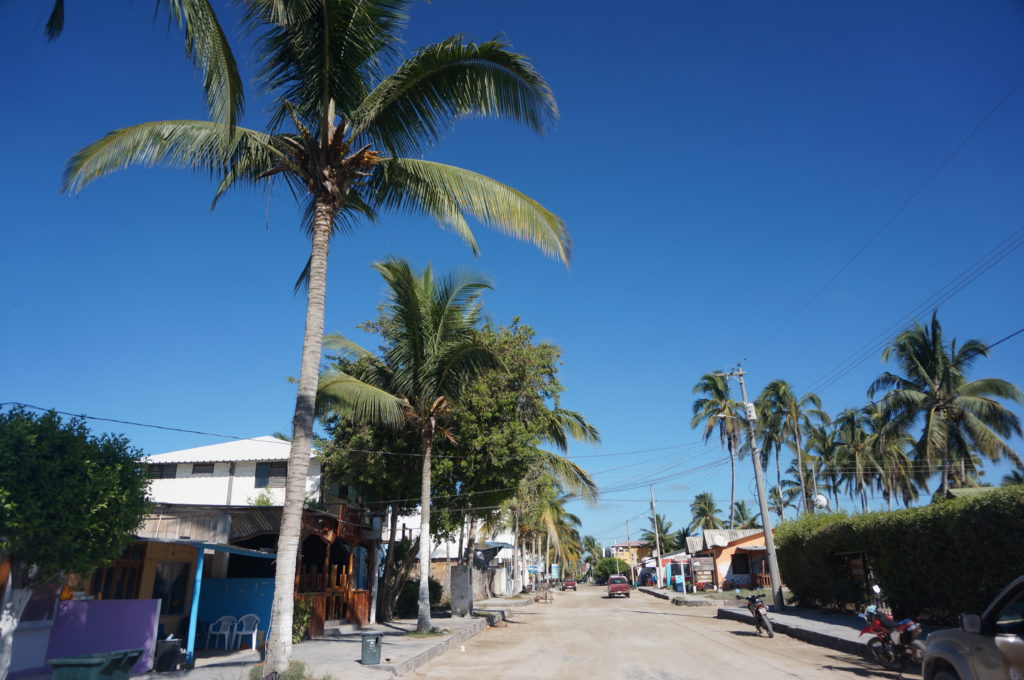
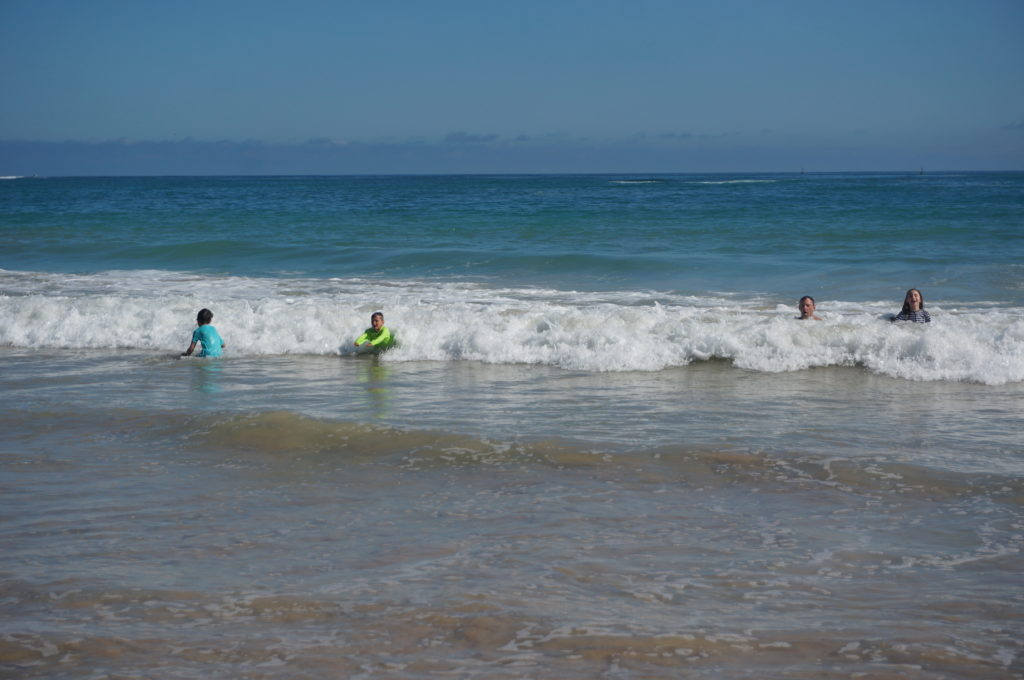
We were then politely crammed aboard another water taxi and we waited while the crew piled our bags high on the tiny forward deck. We sat on the benches of the taxi with a dozen other passengers, watching skeptically while our bags swayed on the deck as the little boat pulled away from the dock. The taxi driver surprised us by asking for 50 cents per person for the ride. We had assumed the cost of the water taxi would be included in the $30 ferry fare – silly gringos.
[Aside: Water taxi rates in Puerto Ayora, Santa Cruz are supposed to be fixed, and all water taxi drivers seem to have a rough idea of the high and low end of the standard, but none seems to stress much about charging the same rate. We paid as little as 40 cents pp on some days and as much as 80 cents pp on others. It became a fun game to guess what the day’s rate might be.]
The taxi pulled up alongside the ferry, which turned out to be a simple powerboat with a forward head (read: bathroom). Two benches ran down either side of the vessel’s interior. We sat as close to the back of the boat as we could since we heard the two-hour crossing could be rough and fresh air would help to fend off seasickness.
The crew tossed our bags from the water taxi across the few feet of water between the boats and into a forward hatch, where we could see them piling up right next to the door of the head.
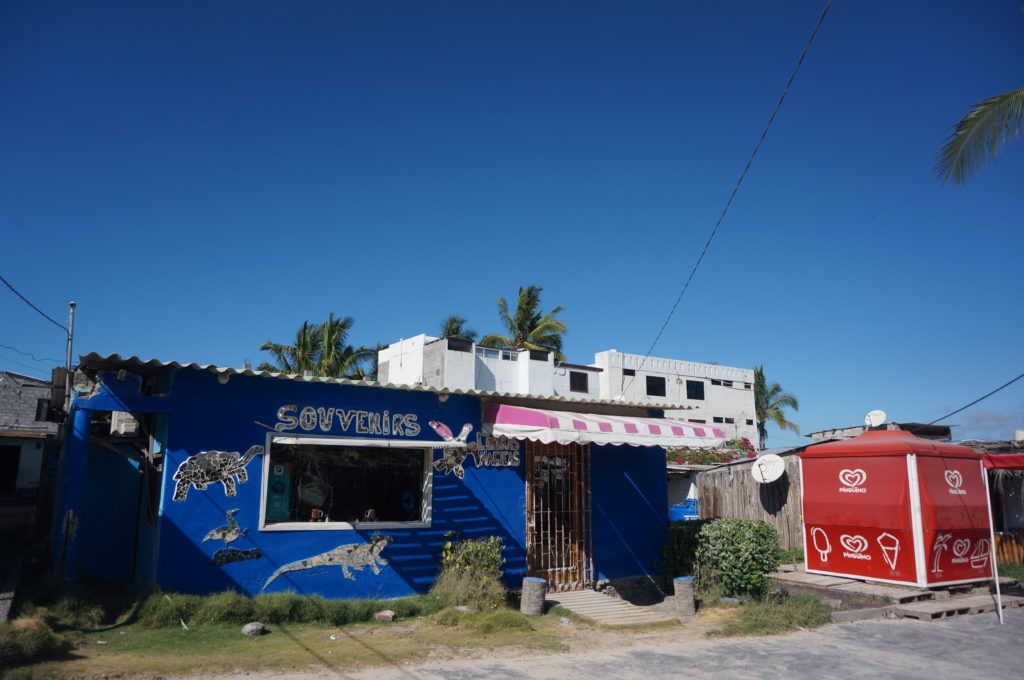
Another taxi pulled up and emptied its passengers into the ferry, they settled in, and we slowly motored out of Puerto Ayora.
It was a beautiful morning, just slightly overcast so the sun wasn’t beating down on us directly, and a light wind ruffled the surface of the deep blue Pacific. The captain throttled the little ferry up to full power and we roared out into open water, cutting over the swells with ease.
The benches weren’t very comfortable but we managed to doze a bit and the two hour trip passed quickly. We entered the little harbor of Puerto Villamil and reversed the process: the crew loaded our luggage onto the foredeck of a water taxi while we jammed onto the benches, we unloaded on the tiny town pier, hefted our bags, and walked up a sandy path to a small dirt parking lot. We grabbed a couple of waiting taxis and after a brief drive through the tiny town we arrived in front of Villa Baronesa, our home for the next few days.
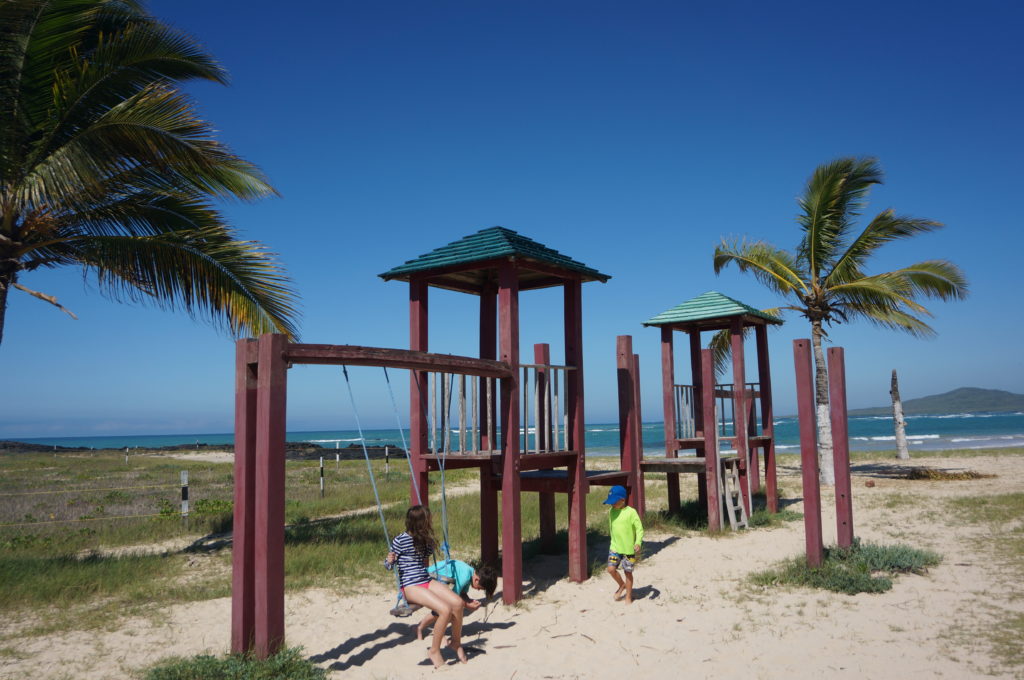
Rebekah, a blond German with a gentle smile, greeted us at the door. The property was pristine, the floors were made of beautiful rough-hewn stone, a sweeping staircase rose to the upper floors, and a nicely appointed kitchen spread out to one side with seating enough for both families.
The real draw, however, was the beach. Villa Baronesa sat right on the sand and the ocean lapped at the villa’s backyard. We stepped from the living room out onto our terrace, which dropped right onto the beach. Thirty feet beyond was the surf.
The thrilled kids ran through the house, excitedly chattering about who was to get which room. Rebekah showed us the rest of the villa, placed her card on a hallway table, and left us to admire the view. We put our luggage away, then David and I headed into town to get groceries for lunch and dinner.
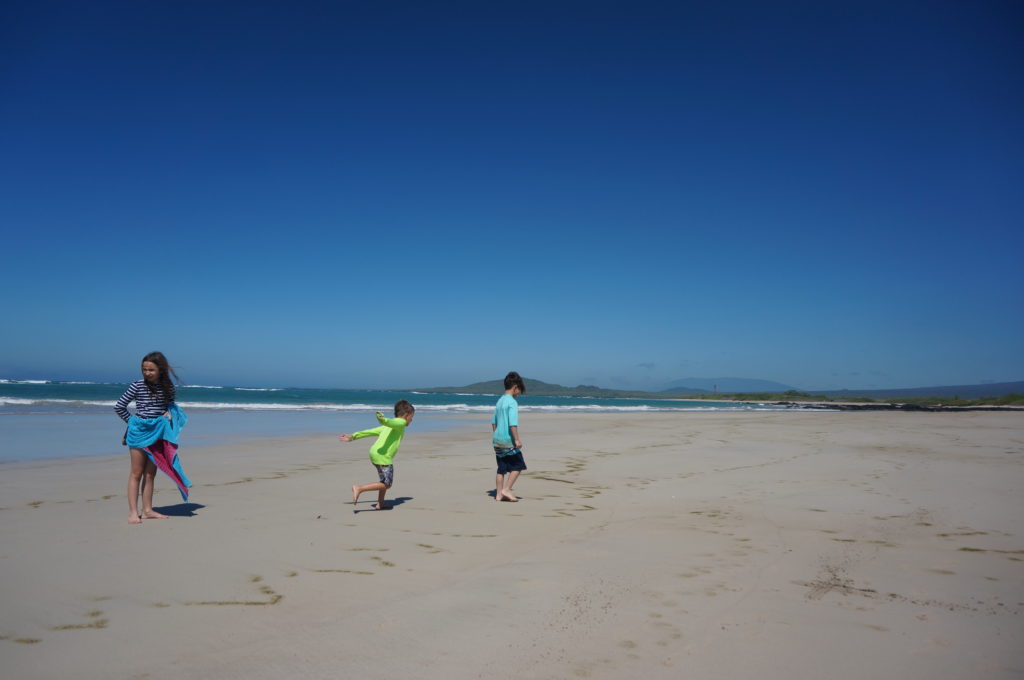
None of the roads in Puerto Villamil were paved. No ATMs, no lighted signs, no large buildings, and there were very few cars. David and I walked through town, asking in Spanish for the nearest market (Google Maps was not much help on Isabela but we didn’t mind), and eventually we found one and quickly grabbed some pasta, fruit, eggs, and a few other basics for the next morning.
Afternoon quickly turned to evening and we decided to hit Caleta Iguana, a restaurant down the street for a lazy dinner on the beach. It turned out to be a great location with seating right on the sand, but the service was ‘meh’ and the food tasted like it had been cooked on a dorm-room hot plate. We sipped a few cocktails after dinner while the kids played on the beach in the darkening twilight.
Check Out – Sleepy Puerto Viejo de Talamanca: A Surfer’s Paradise
We only had three nights in Isabela, and the island was so far from the others that it didn’t make much sense to go off-island during our stay. Our first full day we rose, made breakfast, and spent most of the morning and some of the afternoon on the beach playing in the water with the kids. The surf was ideal for small children, with 2-3 foot breakers crashing a few yards offshore in the mostly clear water. Caiden, Addison, and Braeden had a blast, screaming every time a wave would break over their heads, popping up and excitedly yelling to each other that they had barely survived it, then screaming again as the next wave surged in.
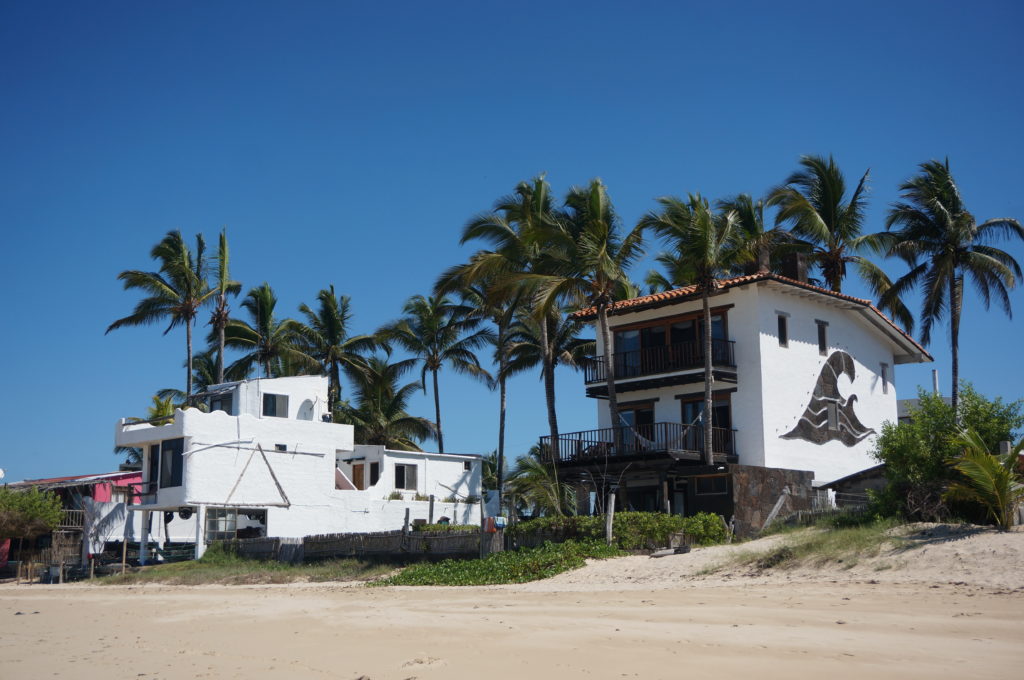
There was a small playground on a windswept section of the beach, so we walked over to let the kids take a spin on the swings and the slide.
Later we took a stroll down the street to a pond where we had heard flamingos liked to nap, and we stood on the wooden observation platform and watched while a couple of the bright pink birds snoozed in the shallows.
In the afternoon Juliann and I made a trip into town to find meat and produce, and after asking around we located the outdoor market, a cluster of stalls where we were able to pick up some fruits and vegetables and a couple of pounds of chicken. We cooked a family dinner that night and crashed early.
The next day dawned bright and hot, and after breakfast we decided to rent bikes and explore. We found a tour operator that had enough bikes for everyone, including a couple of kids’ seats for Vi and Braeden.
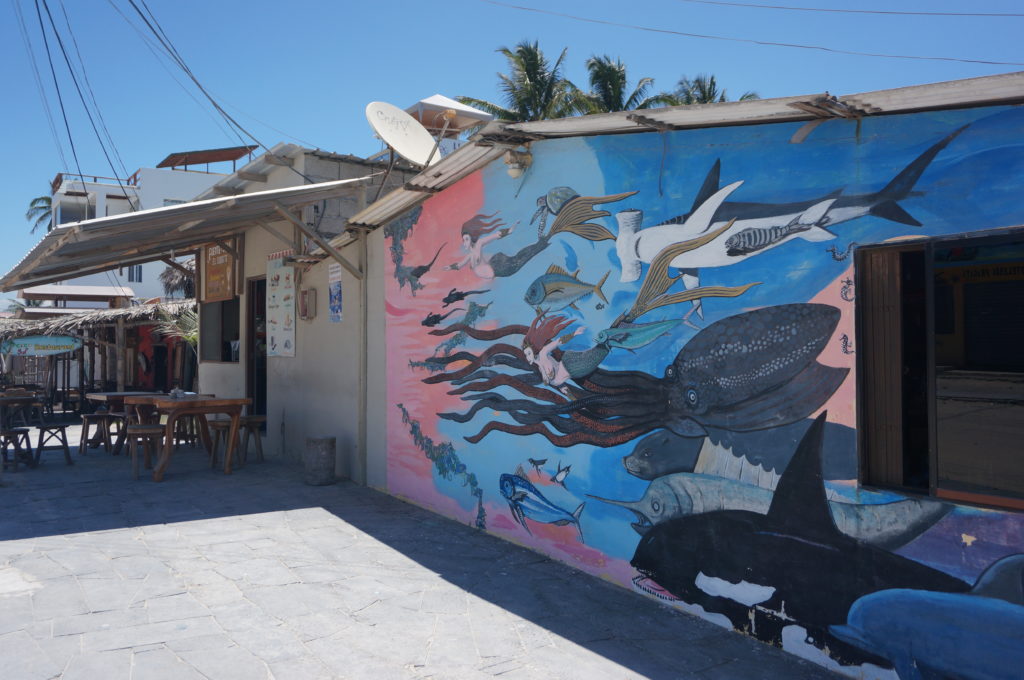
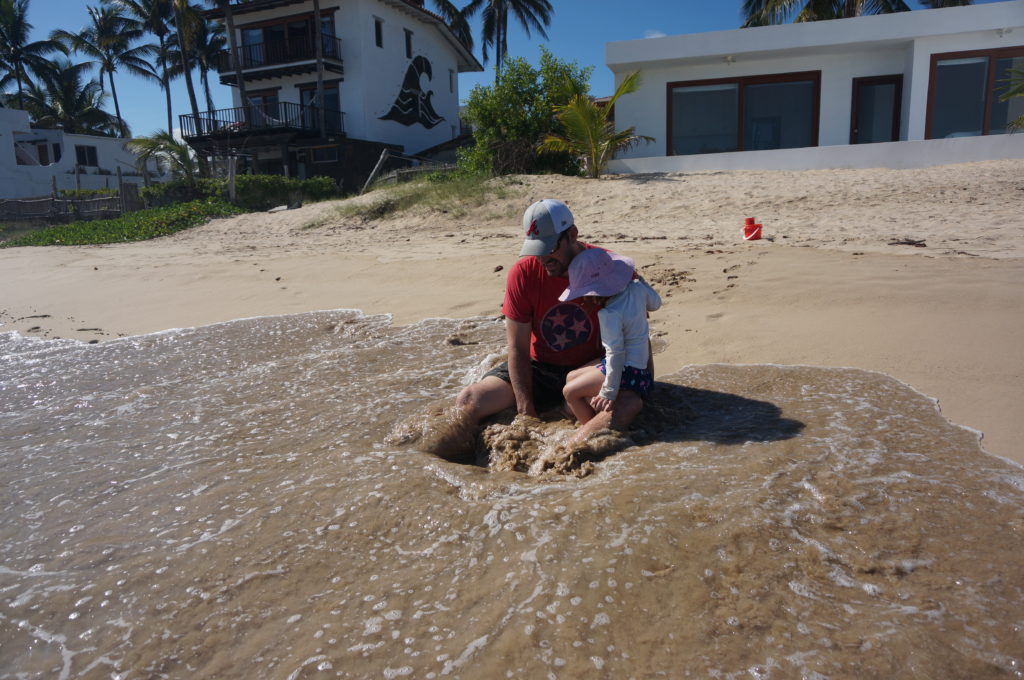
We tossed water and sunblock into our packs and headed west on the dusty main road of Puerto Villamil, then turned onto a small path towards the hatchery. We dismounted our bikes to walk them over a long boardwalk through the salt marsh, where we were able to quietly observe multicolored ducks, lizards, and more flamingos. A couple of flamingos took flight right in front of us, and we paused to watch them go, fiery pink, lanky, muppet-looking creatures flapping their way across the shining waters of the marsh.
The boardwalk ended at a narrow path that cut through a dry landscape of volcanic rock, cactus, and scrub brush. We picked our way slowly through the rocks on our bikes, and we soon found ourselves in a cool, shady grove. We passed a sign staked in front of an apple tree, and my rickety Spanish was good enough to figure out that the apples that lay strewn over the ground – from a Manchineel tree – would burn the skin. We carefully avoided them.
The path ended at the edge of the hatchery’s dirt parking lot, and we notched our bikes in a wooden rack beneath a cluster of palms and walked to the entrance.
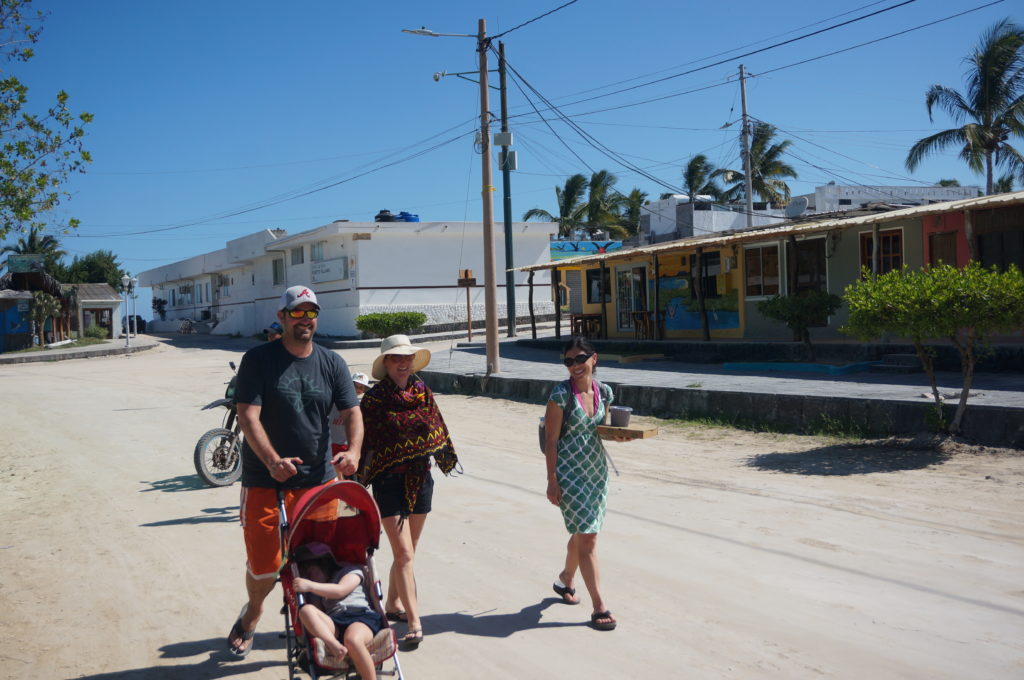
Shortly after the arrival of the first humans on the Galapagos the tortoise population plummeted. The relatively new hatchery on Isabela, along with a few others throughout the archipelago, have been focused on restoring the giant reptiles to their former numbers. The facility had huge, shady pens where tortoises lounged on the grass, numerous nurseries with smaller tortoises in them, and hatcheries snugly cradling hundreds of eggs. Signs everywhere explained the steps in the restoration process and the history of the Galapagos Tortoise, and we read them to the kids as we walked along.
After touring the hatchery we stopped in the little gift shop to buy popsicles (the kids decided coconut and rum raisin were the tastiest flavors) which we savored in the shade of the stoop. Then we hopped back on our bikes and took the main road out of the hatchery.
Three quarters of a mile down the road the ocean came into view. We turned our bikes down a sandy road to the west and immediately saw a stretch of lovely beach.
The road, little more than two ruts in the sand, ran right between the beach and a quaint bar. We rested our bikes against a palapas and ordered a few beers and some bottled water for the kids.

The beach bar was idyllic. A friendly bartender hung out in a cozy shack and tables were strewn across the sand, each covered with a thatched roof. A volleyball net splayed out next to the tables, and off one corner of the bar a slackline (tightrope) stretched taut across the shimmering sand. Once the kids saw the slackline they sprinted to it yelling in unison, “Me first!” at the top of their lungs. The adults even took a few turns on the line, each of us tumbling to the sand amidst gales of laughter.
David, Tanya, Juliann, and I cooled off in the shade with icy Pilseners while the kids played on the slackline, and when the heat became too much we walked across the sand and plunged into the water. For a brief moment that little bar on its tiny swath of white sand was all ours, just two families enjoying life on a tiny island in the Pacific.
We spent a couple of hours on the beach before hopping on our bikes and heading across town to check out Concha de Perla, a lagoon reachable only via a long boardwalk through the mangroves. We left our bikes by the decaying concrete remains of a guardhouse and struck off down the boardwalk.
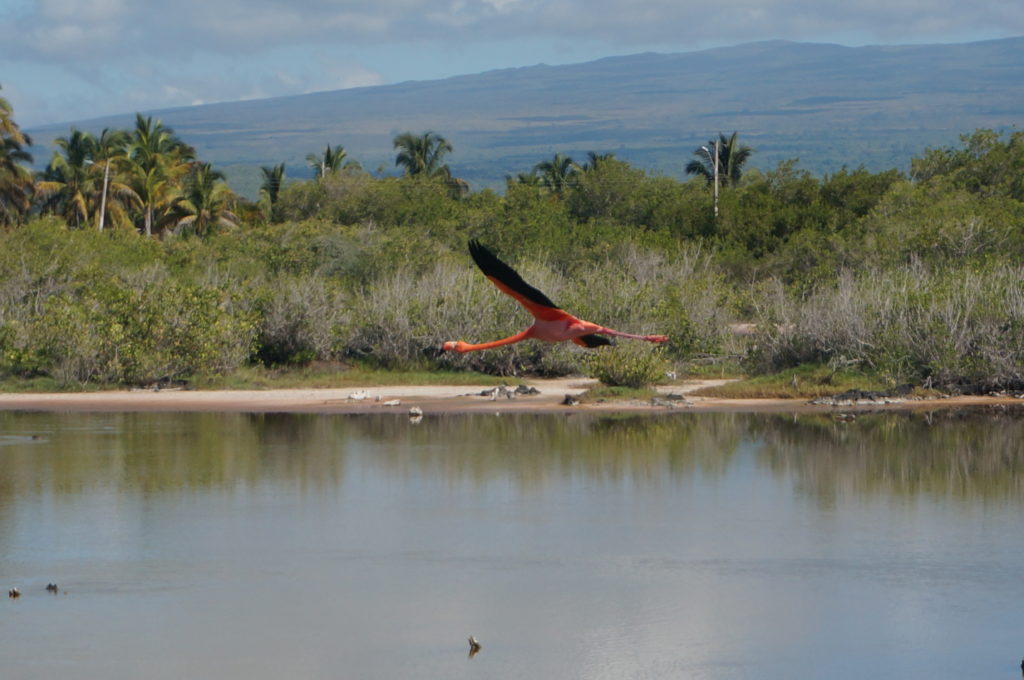
The walk to the lagoon was an adventure in itself. The boardwalk ran close to the water’s surface and through the heart of a dense clutch of mangroves. Large marine iguanas and sea lions lay across the walkway, napping in the cool shade.
Every few feet we were forced to carefully step over or around a cluster of iguanas or a snoozing sea lion. Occasionally we quietly lifted the children over the sleeping animals so as not to disturb them.
The boardwalk was only a few hundred meters long and we reached the lagoon within minutes. A sturdy wooden deck reached out over the edge of the water, flanked by staircases plunging into the water. A dozen or so people sat on the benches of the deck, swam in the lagoon, or clustered around the foot of the staircases in the water. A sleeping sea lion sprawled beneath one of the benches.
The lagoon was a couple of hundred meters across, and a float line bobbed at the entrance opposite the deck – a gentle suggestion to snorkelers to steer clear of the pounding surf beyond.
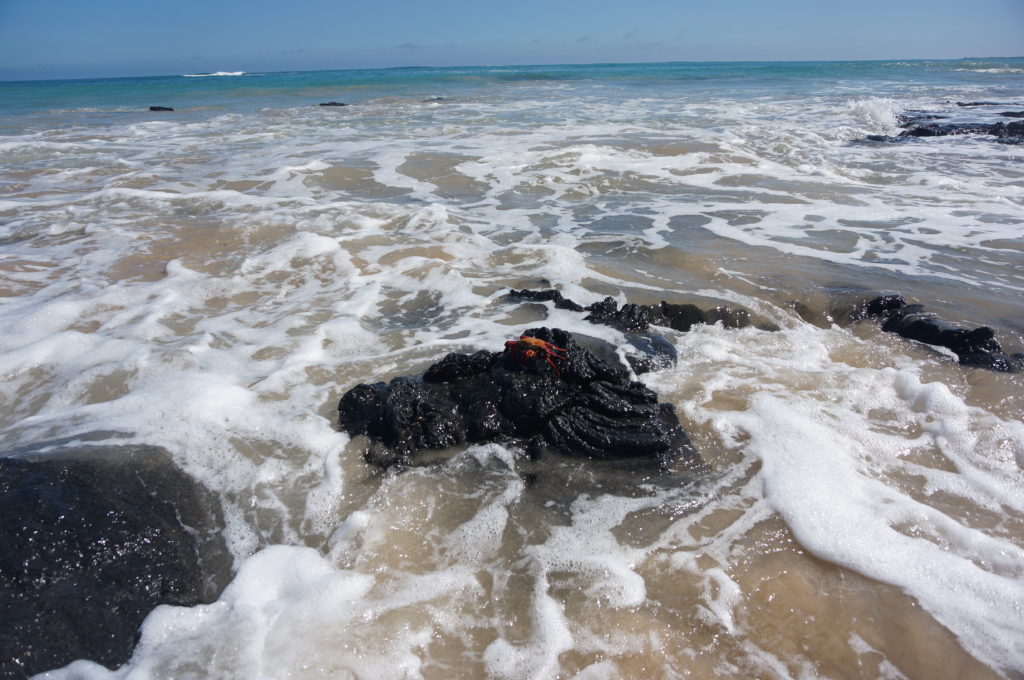
We suited up and jumped into the cold water. There wasn’t much to see in the murky water, but the sea lion caused a stir when she dove in near a cluster of snorkelers, circled them, and swam away.
We lingered about an hour, and when the kids could no longer take the cold water we rode our bikes back into town and returned them to the shop.
Dinner was at home again, and after tucking the kids in we set to packing for the next day’s long trip back to the mainland.
Our taxis were scheduled to pick us up at 5:30 am so we rose before dawn, gently shook the children awake, and piled into the waiting cabs in darkness. At the dock we fetched our lanyards, waited briefly in line, then hopped onto a water taxi for the trip out to our ferry.
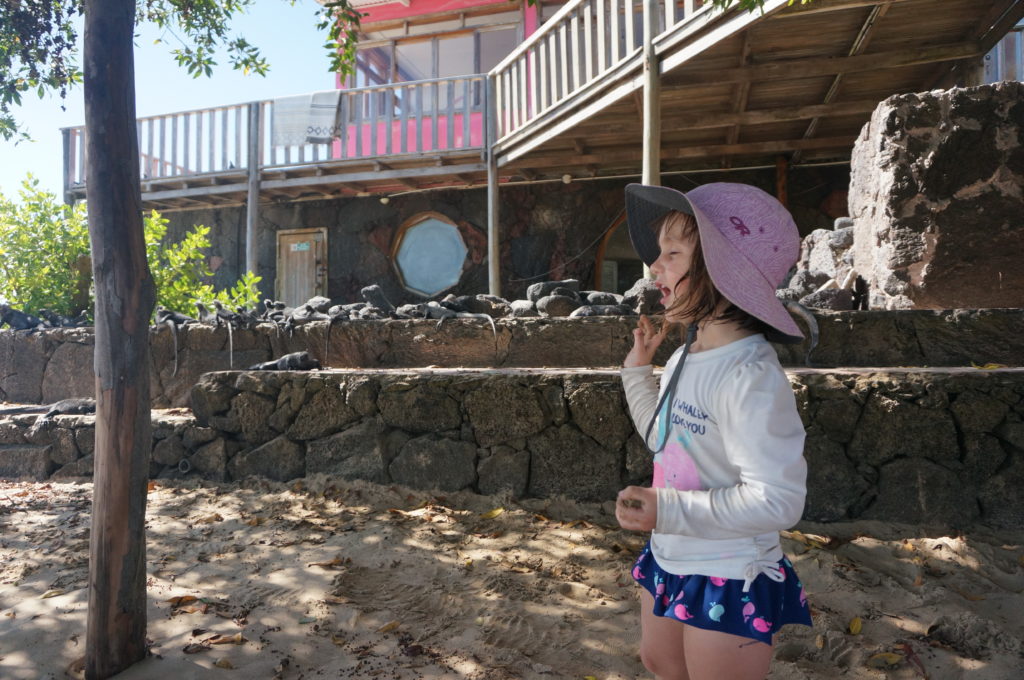
Unlike our trip over from Santa Cruz this ferry was uncomfortably full, with passengers were crammed in shoulder-to-shoulder. Braeden sat on my lap and Caiden sat on David’s because there were no seats. Another water taxi pulled up with even more passengers, who climbed up to the bridge to wedge into the available space near the captain.
We watched as the crew piled luggage into the little forward compartment. On our ride over from Santa Cruz the life vests, in a cupboard in the same compartment, were clearly visible and within reach. As the crew cast off the lines and the boat bobbed towards open water, Tanya and I exchanged uneasy looks when we realized that the life vests were completely inaccessible, buried beneath dozens of heavy suitcases and backpacks. Terrible scenarios turned in my mind. If the boat started sinking ten miles offshore, we would have to race forward and desperately rip luggage out in order to get my hands on the life vests.
I let these thoughts play out for a few minutes, then let them go. The ferry accelerated, now in open water, cutting through the swells. I looked down at Braeden, who was looking quietly out at the ocean, and I smiled.
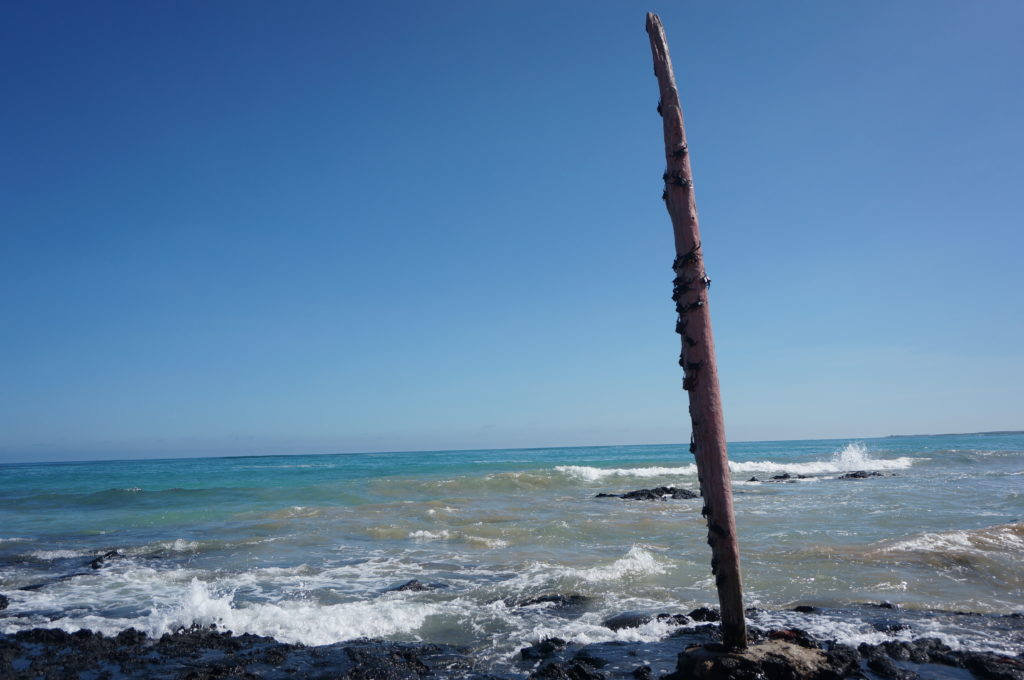
Together we had found the adventure our friends were after, and our trip was only half over. By the end of the day we would be lounging in a cozy little villa at our next destination in the sleepy beachside town of Olon
The boat’s engine droned on. A pelican wheeled in the sky and knifed into the waves. The sun crept up over the horizon. I rested my chin on the top of Braeden’s head and hugged him tightly.
